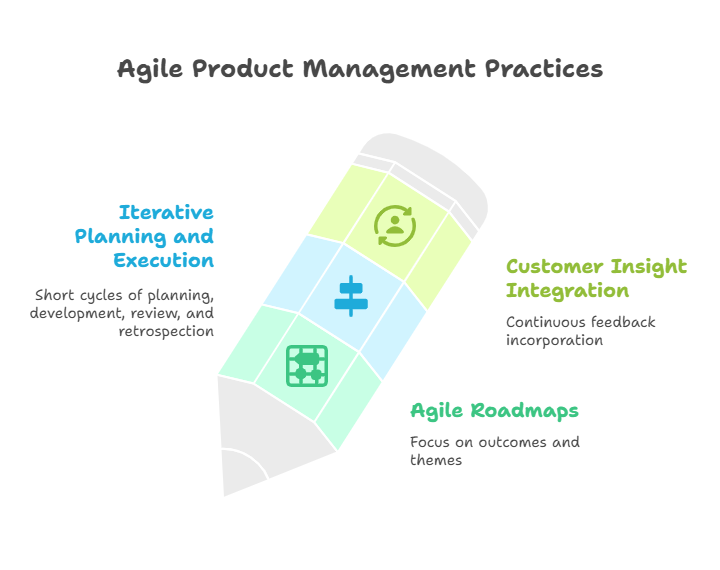What is Agile Product Management? A Practical Guide
Learn how agile product management combines flexibility with customer focus to deliver better products faster. Discover key principles and practices.
What is Agile Product Management?
Agile product management represents a fundamental shift in how teams build products, moving away from rigid, long-term planning toward flexible, iterative development. At its core, agile product management is a philosophy around how teams can effectively collaborate to work toward achieving shared goals. This approach emerged as a direct response to the widespread adoption of agile software development methodologies like Scrum and Kanban.
The Agile Manifesto, written in 2001, laid the foundation for this approach with principles emphasizing that business people and developers must work together daily throughout projects. Product managers stepped in to fill this crucial role, bridging the gap between business objectives and technical execution.
Core Principles of Agile Product Management
Customer-Centric Iteration
Agile product management focuses on guiding products through multiple iterations rather than following a fixed, long-term plan. This approach allows teams to incorporate customer feedback continuously and adapt to changing market conditions. Unlike traditional methods that rely on extensive upfront planning, agile teams welcome flexibility and change as opportunities for improvement.
Collaborative Team Integration
In agile environments, product managers become deeply integrated into technology teams rather than operating primarily within business units. This close collaboration ensures that product decisions are informed by technical realities while maintaining alignment with business objectives. The role involves translating customer needs into actionable development tasks while preserving the overall product vision.
Continuous Value Delivery
Agile methodologies enable teams to work quickly and efficiently while developing software, generating products, or solving business problems. The focus shifts from delivering a perfect final product to providing continuous value through regular, incremental releases. This approach reduces risk by validating assumptions early and often.
Key Agile Product Management Practices

Building Agile Roadmaps
Agile roadmaps differ significantly from traditional product roadmaps. Instead of fixed timelines and feature sets, they focus on outcomes and themes rather than outputs. These living documents evolve based on customer feedback, market changes, and learning from previous iterations.
Iterative Planning and Execution
Agile product management operates in short cycles, typically ranging from one to four weeks. Each cycle includes:
- Planning what to build based on prioritized value
- Development through collaborative teamwork
- Review of completed work with stakeholders
- Retrospection to improve processes
Customer Insight Integration
Successful agile product managers maintain constant connection with customer needs throughout development cycles. They use various techniques to gather and incorporate feedback, including user testing, analytics, and direct customer interviews. This ensures that each iteration delivers increased value to end users.
Benefits of Agile Product Management
Adopting agile product management offers several significant advantages:
- Faster time to market through iterative development
- Reduced risk by validating assumptions early
- Increased flexibility to adapt to changing requirements
- Higher customer satisfaction through continuous feedback integration
- Improved team morale through collaborative decision-making
Implementing Agile Product Management
Transitioning to agile product management requires both mindset and process changes. Teams must embrace uncertainty and view plans as hypotheses to be tested rather than commitments to be fulfilled. Successful implementation involves:
- Establishing clear communication channels between business and technical teams
- Creating feedback loops for continuous learning
- Developing metrics that measure outcomes rather than outputs
- Fostering a culture of experimentation and learning
Visualizing Your Agile Strategy
Mapping out your agile product management approach can help clarify relationships between customer needs, development cycles, and business objectives. ClipMind offers tools to create visual representations of your product strategy, making it easier to communicate and iterate on your approach. For product managers looking to streamline their planning process, our AI Outline Maker can help structure agile roadmaps and iteration plans.
Agile product management represents more than just a set of practices—it's a mindset that embraces change, values collaboration, and prioritizes customer value above all else. By adopting this approach, product teams can navigate complex markets with greater confidence and deliver products that truly meet user needs.
 ClipMind
ClipMind